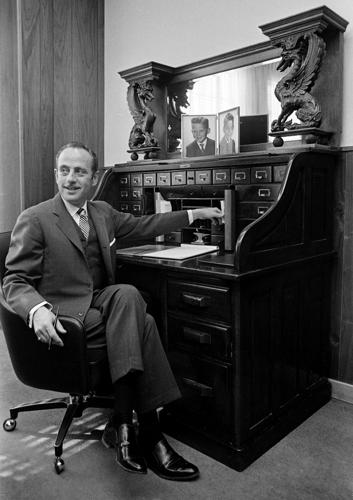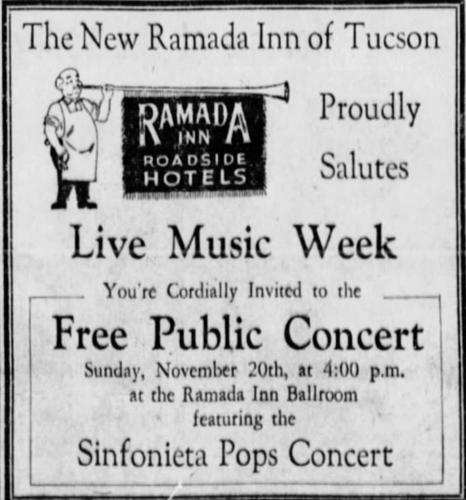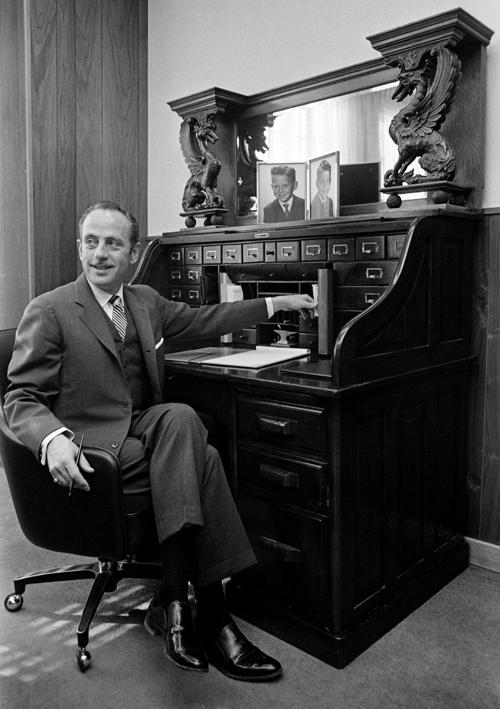Real estate developer Donald M. Millstone and his associates named the streets in many subdivisions around the Tucson area, including the memorable Lak A Yucca Road (read on to see if it means what you think).
Millstone was born in Rochester, New York, in 1927 to Mark and Nettie Millstone. His father, born in Russia, emigrated to the U.S. as a young man and in World War I received a presidential citation for selling the most U.S. War Bonds in the country.
After growing up in Rochester, Donald Millstone joined the Navy at the tail end of World War II, before attending Triple Cities College in Endicott, New York.
In 1950, he wed Naomi W. Gumer, born Naomi Weiss to Yiddish-speaking Polish/German immigrant parents. She had three children from a previous marriage, James (“Jaime”), Carol and Sheila, and she and Donald soon added their sons, Joseph and Michael, to the family.
By late 1950, Millstone and his family were living in Tucson, where he began working in real estate. Two years later, he formed Millstone Realty and arranged for the sale of 480 acres of land adjacent to Ryan Airfield to Morris Ernst. Millstone and Ernst filed for a water franchise under the name Sunset Water Co. to provide water to the area.
In 1953, Millstone began selling parcels of the 320 acres of land he owned, far out east on Old Spanish Trail, at $17.50 an acre. His son Joseph says much of the land was sold to the Lusk Corp., which created a subdivision there.
In January 1954, Millstone recorded the Millstone Manor No. 1 subdivision south of Irvington Road and west of Camino De Oeste, and named the only street running through the Joseph Avenue area after his first-born son.
In February and March 1954, he recorded the Millstone Manor No. 2 and No. 3 subdivisions, naming Donald Avenue for himself, Naomi Road for his wife, and Jaime, Carol and Sheila avenues for his stepchildren.
One last street he named in the subdivision was Albert Road, for Albert Goorwitch, a Tucson engineer with the Blanton & Cole firm who worked with Millstone on several projects.
While at Blanton & Cole, Goorwitch himself named some streets. He named 12 streets in the Tucson Estates subdivision off of Kinney Road for cattle brands, many of which, such as Bar X Street, Tumbling F Street and Box R Street, are authentic.
For the Highlands Mobile Home Park off of Lambert Lane in Oro Valley, Goorwitch opened his atlas and named the streets for mountain peaks and ranges — Appalachian Street, Matterhorn Street and Mont Blanc Avenue. Goorwitch stated that he named Lambert Lane for Pima County Supervisor Lambert Kautenburger.
It is believed that Goorwitch developed the original master plan for Green Valley. He also was known for playing violin in the Tucson Symphony Orchestra for many years and serving as president of the Tucson Symphony Society. He died in 1982.
The joint subdivision of Millstone Manor 2 and 3 borders Bopp Road. According to Joseph Millstone, his father suggested the name, officially established by Pima County in 1952, to honor health-food store owner and land owner Walter Bopp.
In 1954, Donald Millstone was clearing land north of Manville Road in the Picture Rocks area when he noticed a lack of yucca plants in the particular area. When he recorded his Millstone Manor No. 4 subdivision, he decided to name the only street Lak-A-Yucca Road; on today’s maps, the hyphens are long gone.
Towards the end of the year, Millstone recorded his Millstone Manor No. 5 subdivision, located next to his first subdivision and south of present-day Vesey Elementary School. Two streets were recorded in this subdivision, Utah Street, already in existence when he built, and Bryce Avenue, believed to have been named by Millstone, possibly for Utah’s Bryce Canyon.
In 1956, Millstone recorded the Millstone Manor No. 6 subdivision on Bopp Road, west of his No. 2 and No. 3 subdivisions, and recorded several names: Albert, Bruce, Claude, Dudley, Edmond, Floyd, George, Henry, Ira, Jerome, Karl, Leonard, Mark and Neal. Here’s what’s known about those, according to Joseph Millstone: Bruce Street was named for Bruce Felber, who worked for realtor Ben Solot; Floyd Street for a man who did the grading work for Millstone’s subdivisions; George Street for George Lembaris or Lambaris, a childhood friend from Rochester; and Mark Avenue for Millstone’s father.
In 1958, Millstone recorded his Millstone Industrial District No. 1 just north of Ryan Airfield, but it does not appear that much happened there.

The New Ramada Inn of Tucson ad, Arizona Daily Star, Nov. 16, 1960.
The same year, Millstone bought an 8-acre tract located northwest of Granada Avenue and Franklin Street. He worked as the general contractor and two years later the Ramada Inn hotel and convention center opened its doors. It is now called the Hotel Tucson City Center.
In the late 1950’s he assembled many acres of land off of Kinney Road, with the intention of creating a master-planned community called Vaquero Via (Cowboy Way).
The development was supposed to be like a small town with a town hall, town square and its own nearby retail/commercial center. It’s possible Goorwitch conceived the idea for the cattle-brand-themed street names when the Vaquero Via idea was still in play. Millstone eventually realized he didn’t have funding for the project and sold the acreage to Lou and Paul Faske of Miami, Florida, who developed Tucson Estates.
During the mid-to-late 1960s, Millstone was elected president of Temple Emanu-El and was involved in the planning of the 60th anniversary celebration of its history. The original Temple Emanu-El, on Stone Avenue is now the Jewish History Museum.
In the 1970s, Millstone continued to serve as president of Temple Emanu-El and was also on the board of directors for what is now called the Tucson Museum of Art.
He also developed his final subdivision, called Millstone Manor East, in 1978, and named one street Lynford Place. The origin of the name is unknown.
The next decade saw him converting the old Westerner Hotel on Stone and Broadway into office space. Later he went into semi-retirement and died in 1991.







